Warren Feeney – 22 November, 2013
If there is a remote element of truth in the widespread premise that the art gallery acts as the ‘cathedral' of the 21st century, in its consideration of the merits of space and tonal modulation, 'Shifting Lines' might be one of the few exhibitions that could justify such a claim. In its welcome attention to a ‘less is more' methodology, it offers all galleries and curators good reason to consider the value of an economy of intention.
Christchurch
Peter Trevelyan, Pip Culbert, Katie Thomas, Andrew Beck, Gabriella and Silvana Mangano
Shifting Lines
Curated by Ken Hall
9 November - 19 January 2014
If there is a single work in the CAG’s Outer Spaces exhibition Shifting Lines that embodies its claim that it ‘might help redefine how we view drawing,’ then it is Andrew Beck’s Unison (11.45am). Sited in one corner of the Tuam Street gallery (209 Tuam St), Beck appears to have extracted sunlight from a moment in time and immobilised it as a thick black bolt of comic-book lightning. In giving shape, boundaries and a tangible presence to light and space, Unison (11.45am) represents an act of analysis and a claim about certainties - (temporary or otherwise) - ideas that have always been central to drawing practice.
Certainties and a faith in the ability to comprehend and give order to the world are concepts that are currently welcome in Christchurch and Shifting Lines feels like an exhibition intended to cultivate such a response. Curated on the premise of structure, space and the potential of drawing, it is subtle and restrained in the space it accords to objects - five works in black and white over two gallery spaces. Expansive white walls and muted tones of black pervade the gallery and it is a calming, almost monastic experience. A moment of respite from the noise and construction taking place outside the gallery window, looking on to Tuam and High streets.
Yet, to assume that Shifting Lines is an exhibition about composure or serenity would be to limit its agenda. It also embodies its share of deceptions and conundrums. Is it capable of redefining how we might view drawing? The white walls of the gallery and lead-pencil monochrome of the artworks also seem to imply that the gallery visitor has stepped into a kind of virtual-reality sketch book. Pip Culbert’s Pup Tent may seem minimal in form and structure, yet it is entirely evasive, not only in its definition of structure and space, but of the gallery wall itself. Pup Tent renders two-dimensional form into three-dimensions, extending space beyond the surfaces from which its structure arises.
In its visual deceits and geometric design Culbert’s work shares its acknowledgment of Constructivism and European modernism with Gabriella Mangano and Silvana Mangano’s Rewind, a video in which a black geometric shape twisted in space by the artists, brings to life the sensibility of a formalism forever in the process of being made anew. Rewind coolly rejoices in the reality of the limitless possibilities of mark making and abstraction, with all the appropriate restraint and stoicism that an artist like Piet Mondrian would have brought to such a task if he had been requested to.
Katie Thomas’ Westenra Terrace is an impressive 4.5 metre ‘rubbing’ taken from the surfaces of the damaged road in her neighbourhood, mapping and defining something of the unpredictable land beneath her feet. Westenra Terrace is about a gathering and discovery of information - a drawing that finds a degree of resonance in the evolving and unanticipated outcomes and resolutions that also inform the artist’s working processes. While it knowingly touches on gestural painting and pure abstraction, Thomas’ mark-making is also, paradoxically, centred upon a consideration and response to immediate environment.
In its detail and scale - an expansive relief sculpture assembled from hundreds of 0.5 mm mechanical pencil leads - Peter Trevelyan’s Survey #4, is ample evidence of the obsessive compulsive nature that often accompanies drawing practice. Whether perceived as a diagram of an extensive mountain range or a close up detail of a molecular structure Survey #4 offers up more information in its detail than anyone would need or wish to know, but in its discreet and comprehensive occupation of the gallery space it appears capable of making empiricism, cartography and even pure mathematics, sublime and transcendental experiences.
If there is a remote element of truth in the widespread premise that the art gallery acts as the ‘cathedral’ of the 21st century, in its consideration of the merits of space and tonal modulation, Shifting Lines might be one of the few exhibitions that could justify such a claim. In its welcome attention to a ‘less is more’ methodology, it offers all galleries and curators good reason to consider the value of an economy of intention.
Warren Feeney
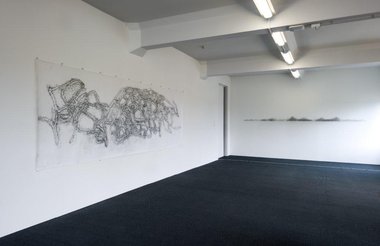
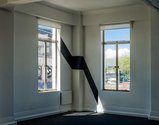
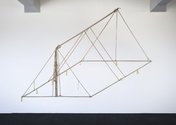
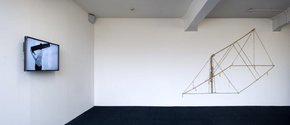
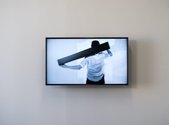
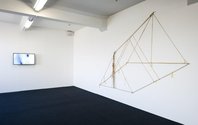
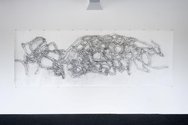
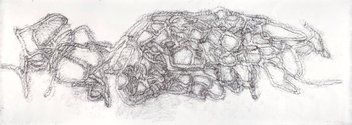
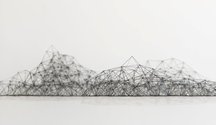
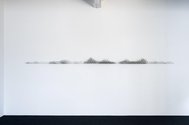
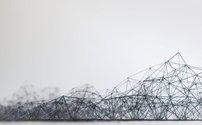
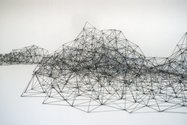
 Advertising in this column
Advertising in this column Two Rooms presents a program of residencies and projects
Two Rooms presents a program of residencies and projects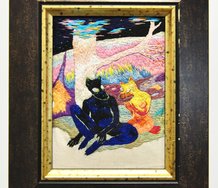
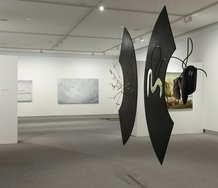
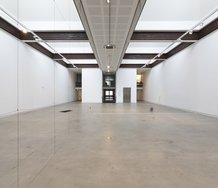

This Discussion has 0 comments.
Comment
Participate
Register to Participate.
Sign in
Sign in to an existing account.